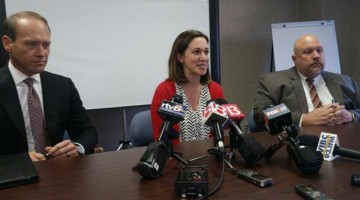by Chris Watts
I’ve said before that Harry Truman would hate Indiana’s debate over teacher pay.
Start with the Governor and Superintendent of Public Instruction, separately elected and sometimes jostling over policy and administrative oversight. Add 150 legislators with a say on the state budget that supplies most school operating funds. And throw in more than 300 school boards and charter authorities deciding how the money is spent. The buck stops nowhere…least of all in teacher paychecks.
The 2021 session would seem like a tough place for progress on teacher compensation; COVID has sent revenues into a tailspin and added non-salary costs to instruction (with each shift between in-person and remote learning). But the crisis shouldn’t overshadow opportunities in the 2022-2023 budget.
For the first time, the Governor’s Office and the Department of Education will speak with one voice, with an appointed Secretary of Education, Katie Jenner, restructuring the Department to provide clear executive branch accountability for education.
This move took a thumbs-up from the General Assembly, where there’s also strong bipartisan support for protecting education funding and prioritizing teacher pay through the fiscal turmoil created by COVID.
And while the pandemic has brought hardship and disruption, it’s also forced us to think outside our comfort zones. This could be the time when new ideas gain traction.
That’s where the Next Level Teacher Pay Commission comes in, releasing a report this week with 37 recommendations on increasing salaries to cut teacher turnover, boost recruitment and support student achievement. Without wading into a comprehensive analysis of the report, here are thoughts on a few of the findings:
#28 State Revenue Increase: The Commission doesn’t shy away from basic math – any significant influx of new funding into education means adding revenue. Based on budget forecasts released Wednesday morning, most growth in the state’s general fund over the next two years (as the economy rebounds from COVID) will be consumed by increased Medicaid spending and leave little flexibility for K-12.
The report mentions a potential income tax increase, but the state sales tax has been a more stable source of revenue through recessions past and present, even beating recent monthly projections. Some have advocated expanding the tax to include service transactions, which could boost collections without a rate increase (a more palatable vote for some lawmakers?). It’s an idea that the Indiana Fiscal Policy Institute (IFPI) has studied in the past.
#27 Local Impact Fees: At the local level, the Commission raises the idea of ‘impact fees’ for new residential developments in high-growth areas. An IFPI study released earlier this year (Capacity-Cost Indexes for Indiana Local Governments by Purdue economist Larry DeBoer) confirms that growing communities also face growing fiscal stress: New homeowners pay property taxes, but a combination of tax caps, increased homestead deductions and maximum levy limits on total property tax collections mean revenues don’t keep up with costs for schools and other public services.
Impact fees could help offset the costs of school expansion, helping districts spend more on teachers. Another idea is adjusting the maximum levy (which currently can’t grow faster than statewide personal income) to allow areas with hot real estate markets to capitalize on this base up to the constitutional caps.
These moves could also ease the pressure on local governments to overuse and extend Tax Increment Financing – a valuable economic development tool that does reduce the property tax potential for schools if not managed thoughtfully (as the report notes in recommendation #22).
The report also focuses on district-level efficiency, even grabbing the third rail of consolidation. Two recommendations caught my attention: Maintaining overall spending levels on teacher pay (#31), so retirements of veteran (higher-paid) teachers don’t lead to diverting resources elsewhere, and ensuring at least 45% of state funding is spent on teacher salaries (#32).
Last year, IFPI released a paper on K-12 personnel costs that focused on a similar issue – the percentage of school staffing budgets dedicated to classroom teachers, based on an analysis of district-reported data by the Indiana Business Research Center (IBRC).
In 2018, Indiana public school corporations spent nearly $5.5 billion on total staff salaries and benefits, almost 80% of the $7 billion state tuition support appropriation that funds most operating and instructional costs. The IBRC found $2.57 billion spent on full-time teacher compensation, just 47 cents for every dollar spent paying K-12 employees.
This is consistent with the broader hiring trend that favors non-classroom staff, as teachers make up less than half of all school personnel across Indiana. These ratios surely don’t reflect our priorities.
(We also looked at districts paying 55% or more of their personnel budgets to teachers and found an average enrollment of 3,537. A 2017 Ball State study, “School Corporation Size and Student Performance” pointed out that the majority of Indiana districts have enrollment less than 2,000, a scale that also seemed suboptimal for academic performance. More fodder in the consolidation debate.)
It’s clear there’s plenty of work that can be done to provide more resources to school districts and to work smarter driving dollars into competitive salaries. Policymakers won’t simply check “all of the above” to the dozens of recommendations released by the Next Level Pay Commission, but their work sets the stage for a much-needed debate on how to keep our best teachers in the classroom.
Chris Watts is the head of the non-partisan Indiana Fiscal Policy Institute.














